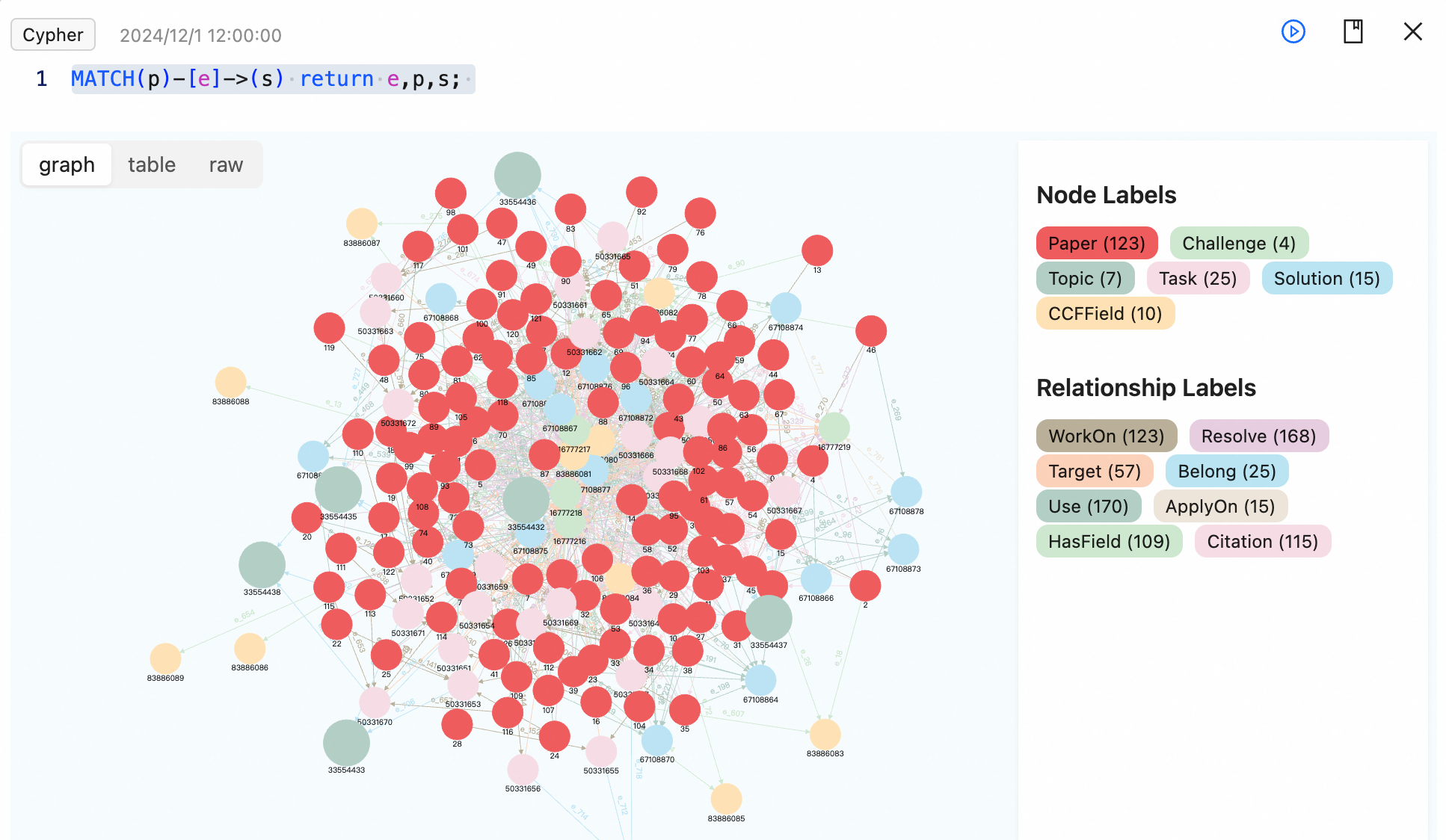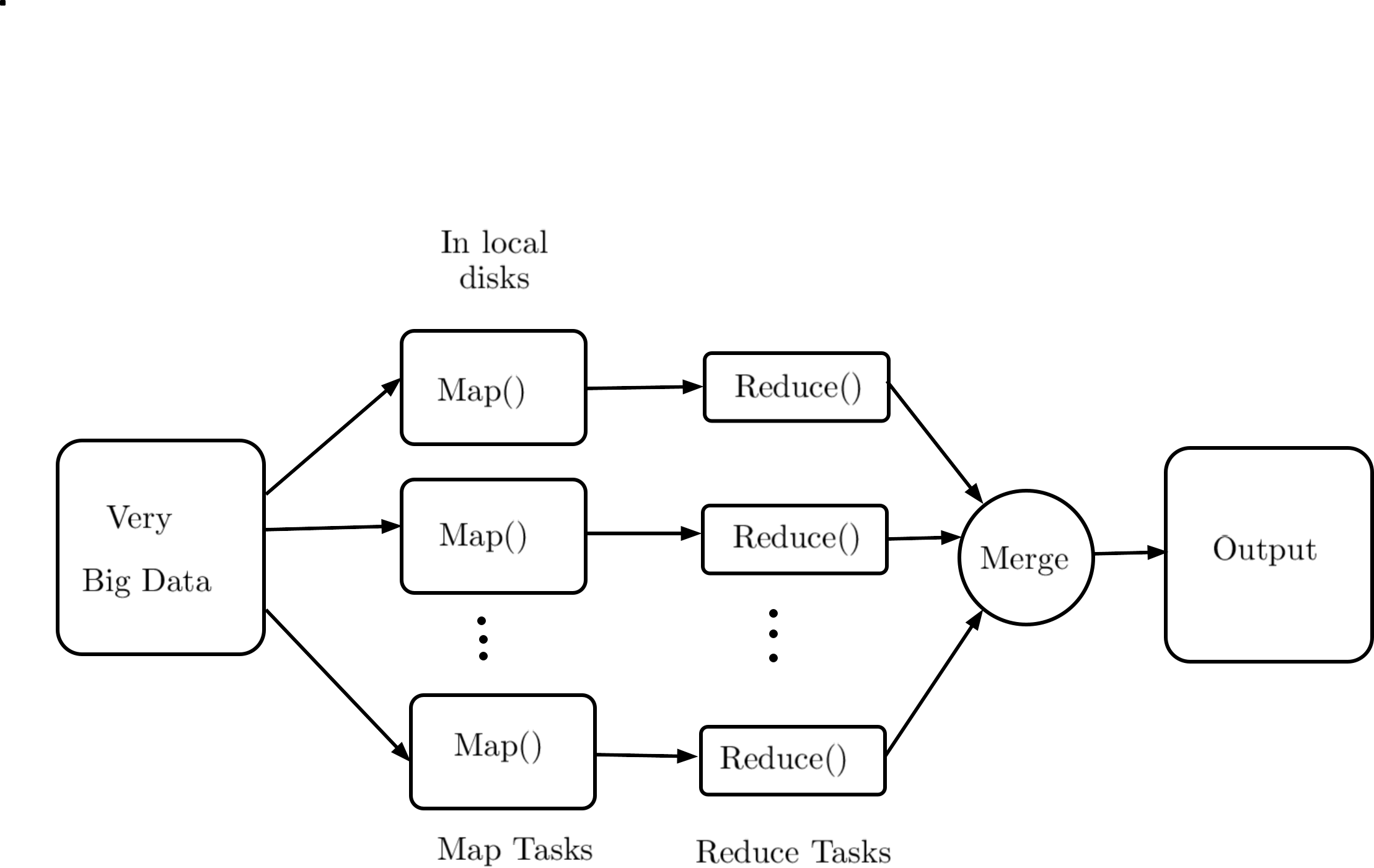A Survey of Distributed Graph Algorithms on Massive Graphs
2404.06037

0
0

Abstract
Distributed processing of large-scale graph data has many practical applications and has been widely studied. In recent years, a lot of distributed graph processing frameworks and algorithms have been proposed. While many efforts have been devoted to analyzing these, with most analyzing them based on programming models, less research focuses on understanding their challenges in distributed environments. Applying graph tasks to distributed environments is not easy, often facing numerous challenges through our analysis, including parallelism, load balancing, communication overhead, and bandwidth. In this paper, we provide an extensive overview of the current state-of-the-art in this field by outlining the challenges and solutions of distributed graph algorithms. We first conduct a systematic analysis of the inherent challenges in distributed graph processing, followed by presenting an overview of existing general solutions. Subsequently, we survey the challenges highlighted in recent distributed graph processing papers and the strategies adopted to address them. Finally, we discuss the current research trends and identify potential future opportunities.
Create account to get full access
Overview
- This paper provides a comprehensive survey of distributed graph algorithms for processing massive graphs.
- It covers the background and concepts related to graph analytics, as well as the key challenges and state-of-the-art solutions for distributed graph processing.
- The paper examines various distributed graph processing frameworks, algorithms, and optimization techniques to handle the scale and complexity of big data graphs.
Plain English Explanation
Graphs are powerful data structures that can represent complex relationships, such as social networks, transportation networks, or biological interactions. As data continues to grow at an unprecedented rate, there is an increasing need to process and analyze these massive graphs efficiently.
The paper discusses the challenges of working with big data graphs, which can be too large to fit on a single computer's memory. To address this, the researchers explore distributed graph processing - where the graph is divided and processed across multiple computers working together. This allows for the analysis of graphs that would be too big for a single machine.
The paper covers the fundamental concepts of graph theory and graph analytics, explaining how these techniques can be used to extract insights from large-scale data. It then delves into the state-of-the-art distributed graph processing frameworks, algorithms, and optimization strategies that have been developed to handle the scale and complexity of big data graphs.
The researchers highlight how distributed graph processing can enable a wide range of applications, from social network analysis to transportation optimization to biological network discovery. By breaking down the graph data and distributing the workload, these systems can tackle computational problems that would be intractable for a single machine.
Technical Explanation
The paper first provides background on graph theory and the key concepts in graph analytics, such as centrality measures, community detection, and graph traversal algorithms. It then discusses the challenges of processing massive graphs, including the limitations of single-machine approaches and the need for distributed solutions.
The researchers survey a range of distributed graph processing frameworks, such as Pregel, GraphLab, and Gemini, that partition the graph and distribute the computation across a cluster of machines. The paper examines the key design choices, algorithms, and optimization techniques used by these frameworks to achieve scalability and efficiency.
Additionally, the researchers explore specialized distributed graph algorithms, such as distributed breadth-first search, connected components, and PageRank, and discuss their performance characteristics and trade-offs. The paper also covers techniques for improving the communication efficiency and fault tolerance of distributed graph processing systems.
Critical Analysis
The paper provides a comprehensive and well-structured overview of the field of distributed graph algorithms on massive graphs. The researchers have done a thorough job of surveying the state-of-the-art solutions and highlighting the key challenges and trade-offs involved in this domain.
One potential limitation of the paper is that it focuses primarily on the technical aspects of distributed graph processing, with less emphasis on the real-world applications and the potential societal impact of these technologies. It would be valuable to see a more in-depth discussion of how these algorithms and frameworks are being used in practice, and the implications for domains such as social network analysis, transportation planning, or biological research.
Additionally, the paper does not delve into the ethical considerations and potential biases that can arise in the analysis of large-scale graph data. As these systems become more widely adopted, it will be crucial to address concerns around privacy, fairness, and the responsible use of these powerful analytical tools.
Conclusion
This survey paper provides a comprehensive overview of the current state of distributed graph algorithms for processing massive graphs. The researchers have done an excellent job of explaining the key concepts, challenges, and state-of-the-art solutions in this rapidly evolving field.
The insights and techniques discussed in this paper have the potential to enable a wide range of applications that rely on the analysis of large-scale, interconnected data. As the volume and complexity of data continue to grow, the ability to harness the power of distributed graph processing will become increasingly important for researchers, businesses, and policymakers alike.
While the paper focuses primarily on the technical aspects of the field, further exploration of the real-world applications and ethical considerations of these technologies would be a valuable addition. Overall, this survey serves as a valuable resource for anyone interested in the cutting-edge developments in distributed graph analytics.
This summary was produced with help from an AI and may contain inaccuracies - check out the links to read the original source documents!
Related Papers

Analysis of Distributed Algorithms for Big-data
Rajendra Purohit, K R Chowdhary, S D Purohit

0
0
The parallel and distributed processing are becoming de facto industry standard, and a large part of the current research is targeted on how to make computing scalable and distributed, dynamically, without allocating the resources on permanent basis. The present article focuses on the study and performance of distributed and parallel algorithms their file systems, to achieve scalability at local level (OpenMP platform), and at global level where computing and file systems are distributed. Various applications, algorithms,file systems have been used to demonstrate the areas, and their performance studies have been presented. The systems and applications chosen here are of open-source nature, due to their wider applicability.
4/10/2024

Communication-Efficient Large-Scale Distributed Deep Learning: A Comprehensive Survey
Feng Liang, Zhen Zhang, Haifeng Lu, Victor C. M. Leung, Yanyi Guo, Xiping Hu

0
0
With the rapid growth in the volume of data sets, models, and devices in the domain of deep learning, there is increasing attention on large-scale distributed deep learning. In contrast to traditional distributed deep learning, the large-scale scenario poses new challenges that include fault tolerance, scalability of algorithms and infrastructures, and heterogeneity in data sets, models, and resources. Due to intensive synchronization of models and sharing of data across GPUs and computing nodes during distributed training and inference processes, communication efficiency becomes the bottleneck for achieving high performance at a large scale. This article surveys the literature over the period of 2018-2023 on algorithms and technologies aimed at achieving efficient communication in large-scale distributed deep learning at various levels, including algorithms, frameworks, and infrastructures. Specifically, we first introduce efficient algorithms for model synchronization and communication data compression in the context of large-scale distributed training. Next, we introduce efficient strategies related to resource allocation and task scheduling for use in distributed training and inference. After that, we present the latest technologies pertaining to modern communication infrastructures used in distributed deep learning with a focus on examining the impact of the communication overhead in a large-scale and heterogeneous setting. Finally, we conduct a case study on the distributed training of large language models at a large scale to illustrate how to apply these technologies in real cases. This article aims to offer researchers a comprehensive understanding of the current landscape of large-scale distributed deep learning and to reveal promising future research directions toward communication-efficient solutions in this scope.
4/10/2024

Resource Allocation and Workload Scheduling for Large-Scale Distributed Deep Learning: A Survey
Feng Liang, Zhen Zhang, Haifeng Lu, Chengming Li, Victor C. M. Leung, Yanyi Guo, Xiping Hu

0
0
With rapidly increasing distributed deep learning workloads in large-scale data centers, efficient distributed deep learning framework strategies for resource allocation and workload scheduling have become the key to high-performance deep learning. The large-scale environment with large volumes of datasets, models, and computational and communication resources raises various unique challenges for resource allocation and workload scheduling in distributed deep learning, such as scheduling complexity, resource and workload heterogeneity, and fault tolerance. To uncover these challenges and corresponding solutions, this survey reviews the literature, mainly from 2019 to 2024, on efficient resource allocation and workload scheduling strategies for large-scale distributed DL. We explore these strategies by focusing on various resource types, scheduling granularity levels, and performance goals during distributed training and inference processes. We highlight critical challenges for each topic and discuss key insights of existing technologies. To illustrate practical large-scale resource allocation and workload scheduling in real distributed deep learning scenarios, we use a case study of training large language models. This survey aims to encourage computer science, artificial intelligence, and communications researchers to understand recent advances and explore future research directions for efficient framework strategies for large-scale distributed deep learning.
6/13/2024
👁️
Scheduling of Distributed Applications on the Computing Continuum: A Survey
Narges Mehran, Dragi Kimovski, Hermann Hellwagner, Dumitru Roman, Ahmet Soylu, Radu Prodan

0
0
The demand for distributed applications has significantly increased over the past decade, with improvements in machine learning techniques fueling this growth. These applications predominantly utilize Cloud data centers for high-performance computing and Fog and Edge devices for low-latency communication for small-size machine learning model training and inference. The challenge of executing applications with different requirements on heterogeneous devices requires effective methods for solving NP-hard resource allocation and application scheduling problems. The state-of-the-art techniques primarily investigate conflicting objectives, such as the completion time, energy consumption, and economic cost of application execution on the Cloud, Fog, and Edge computing infrastructure. Therefore, in this work, we review these research works considering their objectives, methods, and evaluation tools. Based on the review, we provide a discussion on the scheduling methods in the Computing Continuum.
5/2/2024